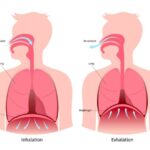Our primary goal at IPA Physio is to help you discover your potential! Inherent to this goal is our desire to help you feel better, move better, and live better. We want to provide you with tools that enable you to move forward with confidence. The information in this article will help you optimize your health and wellness. As you improve your overall health, pain, stiffness, fatigue, and other symptoms will diminish or completely disappear.
We cover much of this information at some point during treatment, but inevitably certain aspects may be missed. Many of you will read this having never been treated by an IPA Physio clinician. In either case, the following information will be valuable for you as you seek to live your best life!
Hopefully this information stimulates further discussion as we all move to enhance physical capacity and resilience.
Discover Your Potential®
If you are in pain, chronically fatigued, or experiencing other chronic symptoms, your lifestyle is probably responsible. This is particularly true of pain that seems to be present with no known cause. If you are like most people, your habits regarding sleep, nutrition, exercise, and stress need to change.
Start with your lifestyle:
- Sleep at least 8 hours per night. Sleep deprivation is at the root of many disease processes. This includes pain conditions. Sleep is the foundation on which diet, exercise, and a healthy mental state are built upon to create a healthy life. Here are 10 simple steps to improve your sleep.
- Eat whole foods, mostly vegetables and organic whenever possible. Avoid added sugars and processed foods! Eat healthy, whole foods! Many people have food sensitivities or allergies that play a direct role in their pain. Additionally, most of these people are not even aware of the connection to food until they eliminate it from their diet and experience the difference.
- Movement and Exercise are critical to overall health. This includes your posture and body mechanics. Every movement you make is an opportunity to either positively or negatively impact your system, and your posture affects your mood. You need to exercise at least 30 minutes per day, 5 days per week (at least!). A comprehensive exercise program will address mobility, balance, coordination, strength, endurance, and cardiorespiratory fitness. Countless published scientific studies demonstrate the importance of exercise in reducing pain, increasing functional capacity of the body, and improving mental health.
- Manage your stress. Stress hormones make pain worse and decrease physical and mental performance. Mental health and physical health are inextricably linked. Chronic emotional stress is also at the heart of many afflictions including depression, ulcers, irritable bowel syndrome, heart disease, diabetes, and more. A few simple strategies to manage your stress include doing activities that you enjoy, participating in community activities, meditation, mental imagery, and breathing exercises.
De-Tox to discover what it feels like to be healthy!
How well is your body getting rid of toxins? We have discussed dietary allergies & sensitivities, and these are very important to avoid. Equally important to identify and avoid are environmental allergies, such as dust, mold, heavy metals, pollution, etc. These can be more challenging to avoid, and they can be a significant source of inflammation. In the efficient state, our body gets rid of toxins in a number of ways, including urinating, pooping, sweating, and more.
- How often do you poop? 1-2x/day is normal and healthy. If you poop less frequently, this needs to be addressed with your therapist and/or doctor.
- How often do you sweat? Sweating is a great way to cleanse the body of toxins. There is not clear research in regard to how often you should sweat, but the more the better.
Are you weighed down?
Being overweight stresses your musculoskeletal system which often leads to or perpetuates pain. Obesity also stresses your body on a physiological level, related to blood sugar control. Obesity has been shown to increase inflammation and the risk of developing cardiovascular diseases, metabolic syndrome, insulin resistance, and diabetes mellitus. For this reason, if you are overweight or obese, take action to work towards your target weight. We can assist with more information and resources.

You need to know this about pain.
Pain affects your entire being. This goes beyond the location that “hurts”. When you experience pain for an extended period of time (chronic pain) many body systems change. These changes may actually sustain and reinforce your pain, creating a pain cycle called central sensitization.
- Pain should diminish as tissues heal.
- Most tissues heal within 2-8 weeks, depending on the injury.
- Chronic pain is more complicated and driven by a number of mechanisms. It is important to partner with an expert clinician, such as those at IPA Physio, to guide you through an effective rehabilitation program.
A little science lesson:
This information is shocking to most people. Bodily sensations such as sharp and dull touch, hot and cold temperatures, and firm pressure versus light touch are all inputs to the brain. A nerve gets stimulated and sends a message to the brain about what is happening to your body. Unlike those sensations, pain is actually an output of the brain. This means your brain creates the experience of pain. And, it does this for an extremely important reason. The ability for the brain to generate pain is critical to survival and living a long and healthy life. Pain protects us from hurting ourselves. Pain is typically a warning sign that your body creates before you reach the threshold of tissue damage.
However, there is not a simple linear equation to explain the cause or severity of pain. Your brain processes these sensory inputs as well as historical context, stress levels, overall health of the body, and other factors. It then synthesizes all the information to conclude whether or not you are in danger. If the brain perceives you are in danger from the sum of all factors, it creates pain. If the culmination of all of the factors does not reach the threshold of danger, the brain does not create the experience of pain. Pain will modulate up or down through the influence of all of the aforementioned factors. If you can understand and manage/modify these factors, you can turn down the volume of the output, pain.
‘Stop picking the scab.’ You can’t get better if you keep getting worse!
Are you doing activities that aggravate your symptoms? It may be how you sleep, or how you sit, or certain exercises, or sex, or doing household chores, etc… You need to be a detective in order to understand the triggers to your pain. It is important to modify, minimize, and/or stop these activities to allow your body to heal. Change the way you move, change the way you feel. Always notify your therapist when you identify a pain trigger, as they can help educate you of ways to more effectively perform each task.
If you have a menstrual cycle, this section is for you.
There are many symptoms commonly associated with the menstrual cycle. However, hormones and bodily changes that take place through the course of your cycle can increase a variety of symptoms throughout your body. These symptoms can include anything from neck pain, headaches, TMJ pain, and even leg pain. Track where you are in your cycle when you have exacerbations, take note of any patterns, and inform your therapist of any patterns you uncover. Additionally, significant pain that occurs at any point during your menstrual cycle is not normal or something you have to live with. This can be treated by a trained therapist (sometimes in conjunction with other medical professionals).
Suggestions to improve health and wellness and decrease pain
- Breath. Breathing through your nose is imperative in order to achieve the optimal balance of oxygen and carbon dioxide in your bloodstream. With each breath your abdomen should expand slightly and your lower ribs should push outwards. You should not feel tension in your chest and neck while breathing at rest.
- Meditation/mindfulness. Incorporating meditation/mindfulness centered around the breath is also very beneficial. There are a number of apps available to guide you here. Try starting by remaining silent for 5-10 minutes while focusing your attention to your breath.
- Go for a walk. If walking does not increase your symptoms, it is a great way to increase blood flow, reduce stress, and promote cardiorespiratory fitness.
- Try ice or heat. In our experience some people report reduction in pain and stiffness related to the application of ice and/or heat. Try one or the other. If you have had a good experience with one over the other in the past, try that first. In general, we find that ice is better for pain reduction and heat helps more with stiffness.
- Stay hydrated…with water. Drink ample water throughout the day. If you need a guideline, try to drink eight 8-ounce glasses of water per day (8×8). Note this is a very general rule but if it helps you drink more water, great! Do not drink soda, juice, Gatorade, or other sugary drinks. Limit caffeine and alcohol consumption (remember these are drugs).
- Get some sun. Sunlight has many benefits – mental, physical, and emotional. Moderate your sun intake – start by exposing your skin to 5-10 minutes of sunlight 3x/week without sunscreen (sunscreen will impair Vitamin D production, and many Americans are vitamin D deficient). Discuss with your physician if you have had or are high risk for skin cancer. Time in nature enhances physical and mental wellbeing.

Common supplements for pain and inflammation:
- Concentrated cherry juice – concentrated, not from concentrate. Try two tablespoons mixed with water. This stuff is packed with antioxidants and anti-inflammatory mediators.
- Omega 3 – again first modify your diet. The average American diet is pro-inflammatory in many ways, one of which is a poor balance between Omega-6 fatty acids (inflammatory) and Omega-3 fatty acids (anti-inflammatory). Adding Omega-3 supplementation may help reduce your pain and inflammation.
- Vitamin D – if you are not getting enough sun, it may be helpful to supplement with Vitamin D. Vitamin D has many health benefits, including modulating our inflammatory response.
- Other natural anti-inflammatory compounds – turmeric, resveratrol, and CBD.
Remember that supplements are not regulated by the FDA, and many have been found to contain undeclared stimulants, anabolic-androgenic steroids, pharmaceuticals, and other substances. It is critical to use a trusted source.
Do not substitute drugs for healthy life choices.
Long-term medication utilization as a substitute for lifestyle change is a poor health decision. Chronic use of NSAIDS (non-steroidal anti-inflammatory drugs) such as aspirin, Advil, and Aleve, is associated with stomach problems, kidney problems, increased risk of heart attack and stroke, etc… They are not as benign as their marketing suggests. If they were developed today, many people question whether they would be allowed to be sold OTC (over the counter). Focus on improving your body’s own mechanisms for fighting inflammation, pain and aging. All three of these things are interrelated. We will continue to post more blog articles to provide tips and insights for how to optimize your body’s healthspan and lifespan.
Thank You
This article was a collaborative effort. Thank you to Ryan Johnson, Foster King, and Gregory Vescera for your contributions and insights based upon your clinical experience.






